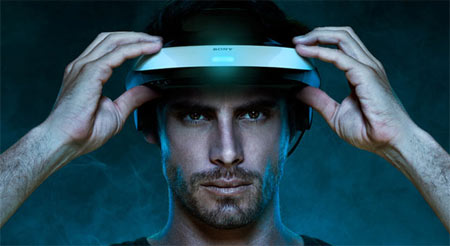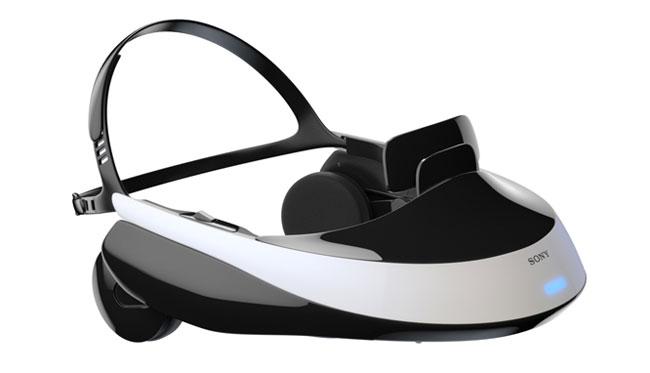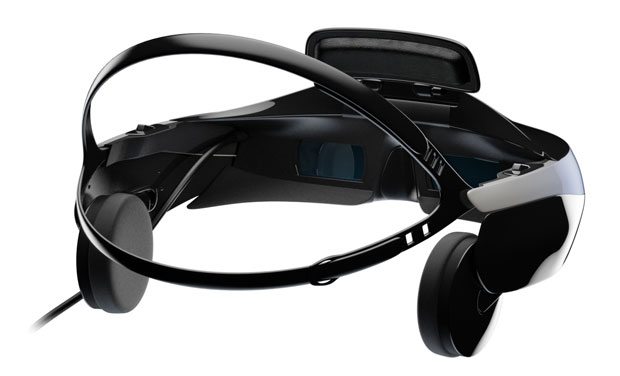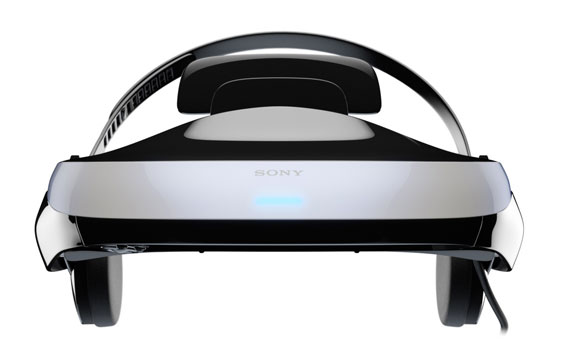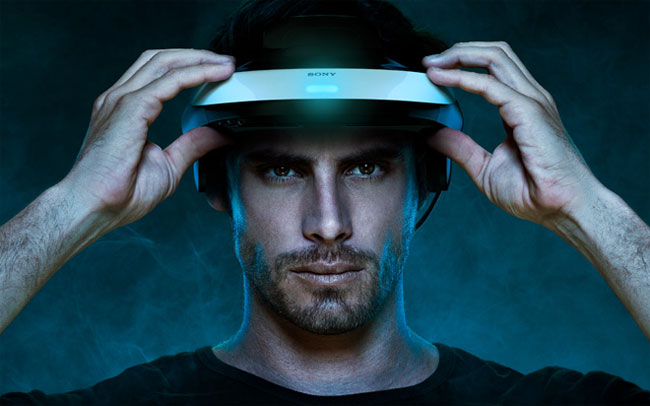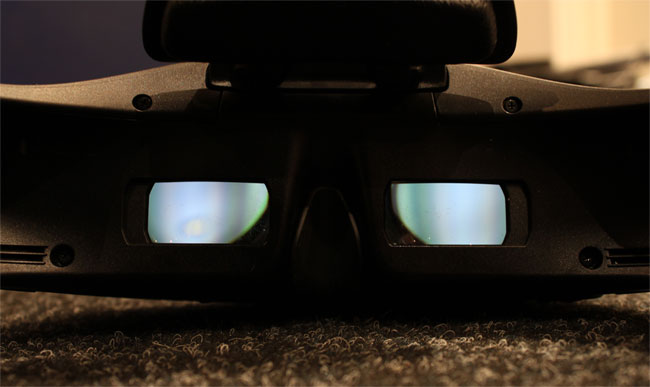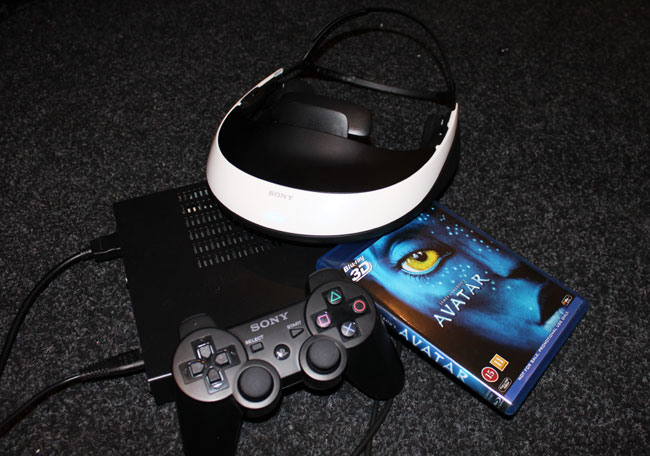Review: Sony Personal 3D Viewer
TABLE OF CONTENTS Specs - Our first impressions - Test tools - Power consumption - Adjusting the headset - Picture quality & experience - Conclusion & future - Debate
Sony has brought their 3D helmet concept to trade fairs as a concept a few times, but now the 3D solution is heading to a store near you. Called Sony Personal 3D Viewer (HMZ-T1) the 3D helmet creates an illusion of a 750-inch screen watched from a viewing distance of 20 meters, using two small OLED panels.
Can Sony revolutionize 3D gaming with the headset? In this review we take a look at Sony’s new technology – and the future prospect.
Subscribe to our Newsletter, RSS feed or twitter to receive notice when new reviews are online.
Screen: 2x0.7” OLEDs Resolution: 1280x720 Response time: 0.01 ms Weight: 420 grams Dimensions (HxWxD): 12.6cm x 21.0cm x 2.57cm Price and retailer:
| US retailer | UK retailer |
 |  |
Our first impressions
The white Sony HMZ-T1 looks almost like a futuristic device from Star Trek; a kind of Virtual Reality device that takes you into a different dimension.The idea is that you place the device right in front of your eyes by tightening a strap on the back of the device. There is also a small pad to support the weight on your forehead.
On both sides Sony has placed headphone speakers and you can also mount a shielding pad underneath to block any light coming in. No light enters from the top or the sides.
The device needs an external box; it is even connected via cable. We would have preferred a wireless solution but we managed. The box is connected to a PlayStation console and TV with HDMI cables and is used to translate the signal before it reaches the headset. The box also has a HDMI output that activates whenever the headset is off.
Test tools
We used Sony PlayStation 3 as a 3D console and 3D movie player.We used a range of 3D movies and 3D games for testing, including Crysis 2, Gran Turismo 5, Wipeout HD, Avatar, Grand Canyon and special 3D testing scenes.
Energy Consumption
You can see our energy measurements on Sony HMZ-T1 below: |  | |
| Standby | 1.3 W | 1.3 W |
| PC | 12.5 W | 12.5 W |
Adjusting the headset
Before you can enjoy the visual experience you need to calibrate the screen inside according to your eyes. Underneath you will find two sliders that control the distance between the screens. Every time you turn on the headset you need to go through a few steps with picture calibration. But it is just as important to physically adjust the helmet horizontally so you need fit the strap behind your head just the right way. It is not easy but you get the idea after 5 minutes.Let us start off by saying that it is absolutely vital that you adjust the screens before you start. If you fail to calibrate the device you will experience blurry pictures with double effects and halos. We tried the headset with a slightly unfitting setting at IFA 2011 in Berlin – it affects pictures a lot.
The strap on the back works but the pad that rests on your forehead is positioned too low in my opinion. The optional shielding pads underneath the headset are not very good either, and you need relatively dark environments for the optimal experience. This way you can also totally immerse yourself in the action.
The technical implementation of the screens builds on two small OLED panels. They measure just 0.7 inches but a mirror solution is utilized to imitate a much larger screen. Sony claims that it creates an illusion of a “750-inch screen watched from a viewing distance of 20 meters”.
Picture quality & experience
Let’s get on to the interesting part; picture quality and the experience.In real use the screens look large, no doubt. The surroundings are completely dark (as long as light is not let through from the bottom) and therefore resemble a cinema experience. But do not expect a totally immersive experience where your entire field of vision is covered. The screens are rectangular and it is easy to tell that you are looking at two screens on a “flat” surface – and black surroundings around them. This is important to understand before we proceed to the actual test. We would have loved to see a different implementation that covered the entire field of vision but we guess that is a wish for future editions.
We will primarily focus on the gaming experience but a little about few movies. We want to start with the general picture experience and a short discussion about the screens picture characteristics.
The OLED screens look very impressive. Despite the small screen size the picture inside looks like a large cinema screen. The OLED screens are extremely fast and black depth is amazing. Colors look vivid and the overall picture characteristics are awesome. The real problem is the mirror solution used inside to create pictures. As said before, the helmet needs to fit very accurately but even when it feels great, you will always notice how the edges of the screen look blurry. Especially text close to the edge looks fuzzy and unfocused. And if you slide the helmet just a few centimeters up, down or to the side, the fuzzy area moves into the center of the images.
We did enjoy the experience, however. Because even though the edges of the picture look a bit blurry you tend to forget that when you are watching a movie or playing a game. The headset naturally supports 3D so we tried to load up some 3D games on our PlayStation 3 console.
Crysis 2 was our first experience and it looked great. Crysis 2 is one of the visually better-looking 3D games out there. The 3D depth was really good and we experienced virtually no crosstalk at all. This is partly because of the two-screen approach, partly because of the fast panels. A too low frame rate in games can cause crosstalk but that didn’t seem to be a problem in Crysis 2. The game felt very immersive and real, and depth control was fine inside the headset. The dark nature of the game also made it a great experience together with Sony’s very ego-centric 3D capsule.
Next up was Motorstorm Apocalypse that feels a lot less polished in terms of visuals. Still, the headset provided a convincing 3D experience, even though Motorstorm is a fast-paced racing game with constant moving. Again; no crosstalk, which is extremely nice.
Avatar 3D looked great in 3D, too. Avatar is, of course, one of the most visual 3D movies created so far but Sony’s 3D helmet does a great job in reproducing the 3D images. 3D depth is great and if you turn off the light in the room, the 3D experience feels very immersive as blacks on the OLED screens look inky-black. 3D movie watching inside the headset is definitely great, too.
We also tried a range of other 3D games and 3D movies and Sony’s product is consistent in delivering a pleasant 3D experience – as long as the material is good. But after 30-60 minutes of gaming you start feeling uncomfortable. The headset is too heavy and I also started feeling a bit confused. My eyes needed to adjust to surroundings afterwards and felt a bit dry – maybe that’s just because I forgot to blink. But nevertheless, if you are planning on using this headset I suggest you take breaks regularly; not only because of the tired eyes but also because the helmet’s uncomfortable nature. And I must admit that the mirror-effect at the edges of the screens did irritate me in the long run.
Before we round off, let us include a few notes about the speaker system. Sony promises a surround sound-like speaker system but I even though we did hear some directional sound noises it never felt like a true surround system – and we didn’t expect that either. However, the speakers are quite good. The sound experience felt believable and blocked out noise from the outside world. It is actually quite amusing to watch people using this headset, because you can pretty much say anything and the person inside hears nothing.
Conclusion and future potential
This is not the first Virtual Reality headset. I even remember “virtual reality” headsets from my childhood but the Sony HMZ-T1 is definitely different – and much better. Still, I cannot help thinking that we are taking baby steps here. Progression in virtual reality headsets is quite slow. But at the same time I believe that the future potential of this technology is significant. With OLED and next-gen gaming I think we are heading for something interesting.The OLED technology is a perfect match for this type of product. It provides lightning fast response time, inky blacks, fantastic picture characteristics and the 3D potential is fantastic. In the future Sony might even be able to implement a kind of bendable, 360-type OLED panel that totally immerses the user. It was also very nice to experience a crosstalk-free 3D product and HMZ-T1 generally provided us with a 3D experience comparable to the best 3D plasma TVs today - maybe even better. The OLED screens did great but the mirror-solution that is intended to enlarge pictures needs to be improve. It created blurry at the screen edges; especially on a black background. And that is the biggest picture issue with Sony’s HMZ-T1.
The most important problem right now is not the picture effect, though. It’s the hassle. Sony needs to make a much lighter product with a much better fit. In addition to the mirror effect, we often experienced blurry pictures because the headset would slide a few millimeters horizontally or vertically. And after using it for 30-60 minutes the headset caused neck pain and tended to rest on the nose sometimes, which was very uncomfortable. And cables are a no-go. We need a wireless solution.
To round things off we think it is fair to call Sony HMZ-T1 a toy. It is a personal 3D viewer and it isolates you from the world around you. That is also why it can never replace a real living room TV because it is an ego-experience. It is a supplement. And even if you prefer to watch movies or play games alone, HMZ-T1 is just too heavy and bulky to serve that purpose in the long run. But as long as it lasts, it offers a great 3D experience.
Price and retailer:
| US retailer | UK retailer |
 |  |
 |  |  |
| Great picture characteristics | Too heavy and bulky | 3D gaming |
| 3D effect | Mirror effect at edges | 3D movies |
| Immersive effect | Cables |
Subscribe to our Newsletter, RSS feed or twitter to receive notice when new reviews are online.

